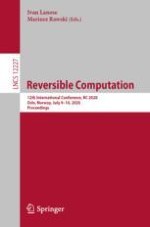2020 | Buch
Reversible Computation
12th International Conference, RC 2020, Oslo, Norway, July 9-10, 2020, Proceedings
herausgegeben von: Dr. Ivan Lanese, Mariusz Rawski
Verlag: Springer International Publishing
Buchreihe : Lecture Notes in Computer Science

 : linear logic extended with least and greatest fixed points allowing inductive and coinductive statements. Linear, reversible computation makes an important sub-class of quantum computation without measurement. In the latter, the notion of purely quantum recursive type is not yet well understood. Moreover, models for reasoning about quantum algorithms only provide complex types for classical datatypes: there are usually no types for purely quantum objects beside tensors of quantum bits. This work is a first step towards understanding purely quantum recursive types.
: linear logic extended with least and greatest fixed points allowing inductive and coinductive statements. Linear, reversible computation makes an important sub-class of quantum computation without measurement. In the latter, the notion of purely quantum recursive type is not yet well understood. Moreover, models for reasoning about quantum algorithms only provide complex types for classical datatypes: there are usually no types for purely quantum objects beside tensors of quantum bits. This work is a first step towards understanding purely quantum recursive types. also creates a value
also creates a value 
